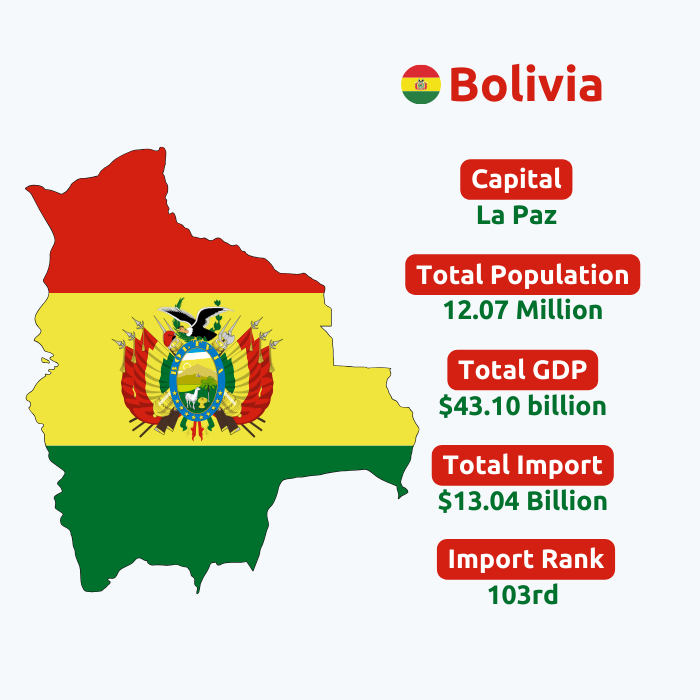Bolivia Import Data
The Pluractional State of Bolivia is another name for Bolivia. It is situated in South America's western region. Due to its geographical location, Bolivia has borders with several nations, including Brazil, Paraguay, Argentina, and Peru. Bolivia's economy is ranked 100th out of the world's most complicated. According to Bolivia trade data, Bolivia ranked 108th out of 226 nations in total imports in 2023. In today's globalized economy, import and export data plays a crucial role in understanding a country's economic trends and business opportunities. Let us delve into the intricacies of Bolivia trade data, specifically focusing on the import data for the year 2023. Whether you are a business owner looking to expand your market or an individual interested in understanding Bolivia's import dynamics, this trade data will provide you with the information you need.
According to Bolivia import data, Bolivia imported goods worth $11.1 billion in 2023. Bolivia's imports of goods fell by 12% from the previous year to 2023. Mineral fuels and oils are Bolivia’s biggest imports, while China is its biggest import partner as per Bolivia customs data. Bolivia’s total GDP is $45.85 billion, with a GDP import share of 31.19%. Bolivia is a part of trading blocs such as Mercosur, ALBA, and GSP. Let us explore more about Bolivia import shipment data and shipment data along with major import trends.




